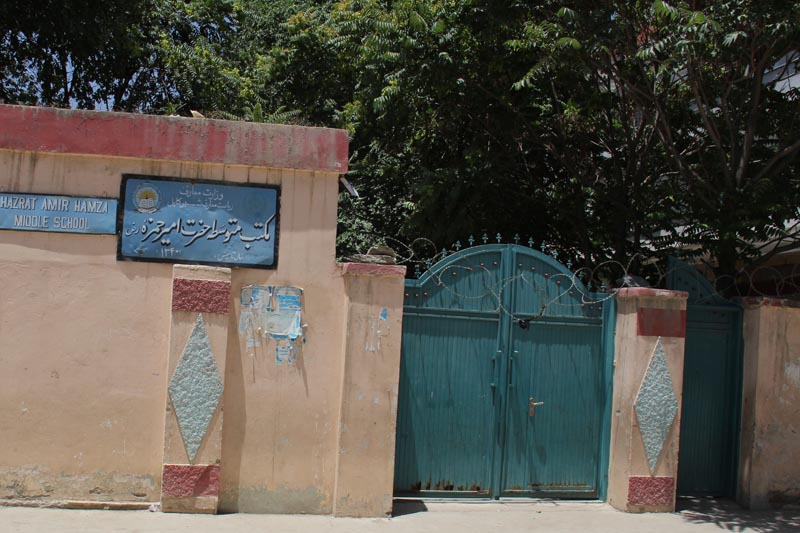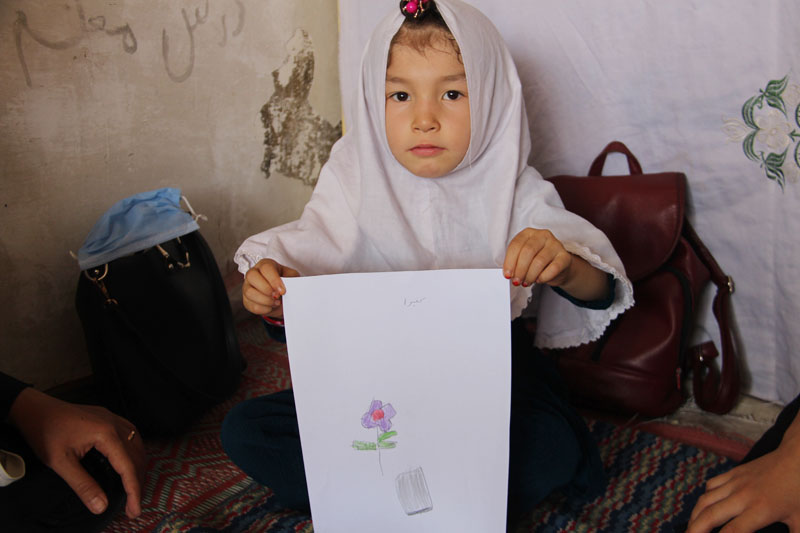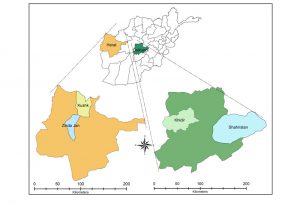Diversity, Equity, and Inclusion
We are steadfastly committed to advancing diversity, equity, and inclusion in our operations. At ARM Consulting, diversity, equity, and inclusion are integral to our values and guide our strategic thinking and day-to-day operations. This is evident by our staff from more than 18 different nationalities and ethnicities, 37% women, 4% persons with disabilities, speaking in over 30 languages. ARM Consulting has a zero-tolerance policy against discrimination based on gender, race, nationality, ethnicity, sexual orientation, political opinion, etc.

Corporate Social Responsibility
We are strengthening the communities where we live and work. Guided by a spirit of service and passion for social impact, we make a difference by contributing financially to vulnerable communities. We do this by utilizing five percent of our annual net profit on CSR.
Repairing a girls’ secondary school in Kabul

Through its resources, ARM Consulting provided a USD 10,000 grant to Amir Hamza Secondary School in Dehmazang, Kabul , Afghanistan, to repair and maintain three classrooms where girls were attending classes despite serious concerns. This grant was awarded to the school administration to improve the classrooms’ condition so that students can learn without fearing risk to their lives.
Humanitarian Assistance

Afghanistan is going through an unprecedented humanitarian crisis characterized by widespread poverty and high unemployment. We contribute, albeit small, by providing food, clothes, shoes, and other necessities to children, women, and elderly people across the country.
Environmental Sustainability
Climate change is one of the most pressing challenges facing humanity. At ARM Consulting, we believe that the private sector has a fundamental role in combating climate change. In partnerships with our clients and partners, we are inspired to build a more sustainable and inclusive future for all. We do this by investigating the ill effects of climate change and providing practical solutions. We also help development partners to uphold their commitment via-a-vis global commitments on climate change and environmental protection.
In March 2020, ARM Consulting conducted a research study on the impacts of climate change on Natural Resources Management (NRM) in the Daikundi and Herat provinces of Afghanistan. The study was undertaken to raise awareness, advocate for solutions, influence policy decisions, inform capacity-building measures, and design programmatic interventions to mitigate and adapt to the impacts of climate on NRM.
The study adopted quantitative and qualitative data collection from primary and secondary sources. The quantitative data was gathered through remote sensing, while the qualitative was collected through Key Informant Interviews (KII) and Focus Group Discussions (FGD) with relevant government entities, development actors, civil society, journalists, private sector, university lecturers and students, subject matter experts and community women and men. The study involved 47 interviews with key informants (3 females; 44 males). Besides that, nine FGDs were conducted to capture the perspectives of community women, men, and university students on the impacts of climate change on communities in the target provinces.
The research study unveils the following key findings:
- There is a consensus among the respondents that Afghanistan has adequate policies and legislation to deal with climate change but that their implementation has been slow and cumbersome. The respondents further believe that inadequate financial resources have hindered the implementation of existing policies and legislations, insufficient institutional capacity, lack of awareness on climate change among key stakeholders, absence of reliable data, sub-optimal coordination between government and non-governmental organizations, insecurity, and corruption.
- Community members, both women and men have limited awareness of climate change, its effects, and the required preparation, adaptation, and mitigation measures. When asked if they had heard about “climate change,” most participants, especially women, reported they had not.
- Within the relevant governmental organizations, climate change related awareness and capacity exist, but this is limited to the key personnel at the national level. Interviews with relevant government agencies at the sub-national level in the target provinces indicated a low level of awareness about climate change. The capacity to understand the causes of climate change and adapt to and mitigate its adverse effects is almost non-existent.
- Precipitation data from the Climate Hazards Group InfraRed Precipitation with Station (CHIRPS) indicates that the long-term mean annual precipitation (1990-2019) in the Shahristan district is 268±50 mm, lower than the national mean annual precipitation (327mm). The precipitation level has increased recently, but no advantage has been taken from it due to the district’s lack of adequate water storage infrastructure. On the contrary, the district has witnessed flooding, causing deaths and damage to physical infrastructure and agricultural land and, by extension, the livelihood of the target communities.
- The hydro-meteorological data from the Climate Forecast System Reanalysis Survey (CFSR) shows an increase in the mean annual temperature of the Shahristan district over the last three decades. The highest mean annual temperature recorded over the 30 years was 11.4 0C in 2016, while the lowest mean annual temperature was ten 0C in 2019. The study reveals that a temperature rise will accelerate the rate of actual water consumption or actual evapotranspiration in the district, which has consequences for the agriculture sector, both positive and negative, depending on the precipitation amount, frequency, and timing, as well as other parameters such as relative humidity.
- The long-term mean annual precipitation (1990-2019) in the Khadir district is 265±58mm, lower than the national mean annual precipitation. According to government officials and community members, the district experienced a considerable drought between 2009-2013, which hit the agricultural output hard. On the other hand, the district recorded the highest precipitation in the last 30 years in 2019, with 455 mm, causing flooding and creating road blockages during the last winter due to heavy snowfalls. Under the climate change scenario of RCP 4.5, the district is expected to receive about nine percent more precipitation by the end of 2050, while under scenario RCP 8.5, the increase will be 17.5 percent. According to Pearsall (2017), the increased drought, caused by low precipitations, retards farmers’ ability to grow more crops and raise livestock. This contributes to increasing food and livelihood insecurity. Central Afghanistan is responsible for growing surplus grain and providing labor opportunities to the surrounding communities, but decreased agricultural productivity due to drought has increased food insecurity throughout the country. Therefore if proper mitigation and adaptation strategies are not employed, it is strongly believed that cropping patterns will alter, which itself can be attributed to climate change adaptation.
- The three decades long temperature analysis for the Khadir district shows that the mean annual temperature was 10±0.8 0C and remained between 9 and 12 0 There were fluctuations, but the mean annual minimum temperature recorded by CFSR was nine 0C largely throughout the 1990s and 2012. This district’s highest mean annual temperature recorded was 120C in 2010, the highest in almost three decades. The projected future climate change scenario of RCP 4.5 indicates that Khadir district will experience a temperature increase of 1.8 0C, while under the RCP 8.5 scenario; the temperature might increase by 2.2 0C by the end of 2050.
- The long-term mean annual precipitation in Khushk Robat Sangi district is 274±71mm, lower than the national mean annual precipitation. The precipitation remained low between 1990 and 2001 when the district witnessed comparatively less rain. Since 2001, the precipitation level has changed year to year, and no clear trends can be seen in it, highlighting extreme weather changes. More importantly, the district experienced a severe drought between the period of 2010 and 2014, which had a profound impact on crops, especially rice, and wheat. Under the future scenarios of RCP 4.5 and RCP 8.5, the precipitation amount is expected to increase by 8.2 percent and 19.2 percent, respectively.
- The data reveal that the mean annual temperature in Khushk Robat Sangi district was 14.9±1.0 0C between 1990 and 2019. The highest mean annual temperature in the district was 16.6 0C in 2001, followed by 16.2 0C in 2012. The data also reveal that the mean annual temperature in the district has fallen since 2012, though there have been fluctuations since then. The evaluation of climate change scenarios RCP 4.5 and RCP 8.5 suggests that the district will experience a temperature rise of 1.6 0C and 2.1 0C, respectively, by the year 2050. This temperature increase will likely accelerate evapotranspiration and may alter the growth period of certain crops.
- Analysis of three decades of precipitation data received from Climate Hazards Group InfraRed Precipitation with Station (CHIRPS) shows the mean annual precipitation to be 235±58 mm in the Zinda Jan district. The mean annual precipitation was lower for most years between 1990 and 2009 than the three decadal mean. In 1996 and 1997, the district experienced the lowest precipitation: 147mm and 162mm, respectively. Since 2009, extreme events have surpassed the mean annual precipitation and added moisture to the soil root zone. In 2019, the district’s highest level of precipitation occurred since 1990, with 385 mm. The year 2019, the wettest year in almost 30 years, presented an opportunity to store water for irrigation and replenish the underground water table. However, the opportunity was lost due to inadequate water storage capacity. Instead, the district was adversely affected by heavy flooding, resulting in damage to residential houses (HDX 2019). The future climate change projection scenario of RCP 4.5 shows that the district is most likely to receive around eight percent more precipitation by 2050 than in the past. Under RCP 8.5, the district is projected to receive 22 percent more precipitation.
- The historical temperature trend over the last three decades (1990-2019) shows a mean annual (3-decadal) temperature of 17±1 0C in the Zinda Jan district. From 1997 to 2007, the mean annual temperature was above the 3-decadal mean line, indicating relatively warmer weather in the district. From 2011 to 2015, the mean annual temperature was below the 3-decadal mean temperature line, suggesting relatively colder weather in the district. The highest mean annual temperature during this period was recorded in 2001 at 18 0C, while the lowest was recorded in 1992 at 15 0 The year 2019 was one of the warmest years, recording a mean annual temperature of 18 0C, the highest since 2010. The projected climate change scenarios of RCP 4.5 indicate that the district will most likely experience a temperature increase of 1.6 0C by 2050. Similarly, the RCP 8.5 shows that the temperature increase might be up to 2.1 0C by 2050.
- Afghanistan’s dwindling groundwater resources place its agriculture sector at risk. Since a centralized water supply system does not exist in most parts of the target provinces, households dig their wells to withdraw water for domestic, municipal, and (to a lesser degree) industrial needs. Besides the natural recharge of groundwater aquifers, there have been no human interventions anywhere in the country to recharge groundwater. Government officials in both provinces have expressed concern about the depleting underground water table, especially in Herat province, which has witnessed an influx of returnees and internally displaced populations.
- Climate change will likely alter the frequency and intensity of forest disturbances in various forms, such as storms, insect outbreaks, and the spread of invasive species. There is a need for further research to better understand how climate affects disturbances and how forests respond. Improved monitoring plans and advanced analytic tools are required to develop a more comprehensive understanding. The respondents in both Daikundai and Herat provinces indicated a surge in different types of diseases in both plants and animals. For instance, the agricultural officials and farmers in Daikundai stated that almonds, a strategic crop for the province, have been affected by new types of diseases in the last two years. This has decreased the production output of almonds and put considerable pressure on the livelihood and well-being of local communities.
- The consultations with community members, both women, and men, indicate that women are extensively engaged in agriculture, particularly in Daikundai province. Hence, the adverse impacts of climate change on agricultural productivity affect women and men who work in agriculture and livestock. The study also establishes a link between climate change and high mother and child mortality in the target areas as well as; the community women have reported that their male household members display violent behavior when the household livelihood is put at risk by drought, flooding, and other adverse effects of climate change.
- The research study unveils that climate change is a factor in rural-urban migration in both Daikundai and Herat provinces. With the lack of parallel development of services and infrastructures in urban centers, Nilli, the capital of Daikundai, and the city of Herat have expanded in recent years through the establishment of informal settlements. This will likely generate social, economic, and health related challenges for government officials in the long run
The study presents key recommendations to the Afghan government, international development agencies, and other stakeholders.
- Construct reservoirs, dams, including check-dams, and other storage infrastructure to store water, minimize the risk of flooding, and make use of the stored water during the peak demand period for the agriculture sector, which remains the backbone of the country’s economy.
- Promoting renewable energy production systems to minimize Afghanistan’s reliance on imported energy, but more importantly to minimize the greenhouse gas emissions to the air.
- Introducing drought-tolerant crops and providing adequate training to the farmers.
- Introducing water harvesting techniques at the sub-national level and training the communities to safeguard every possible drop of water.
- Including the subjects of climate change, mitigation, and adaptation in the school curriculum and launching specialized degree programs in climate change at the university level to develop a local, context-specific knowledge pool and thereby develop local solutions to local problems caused by climate change.
- Allocating adequate resources and due attention to implementing existing policies and legislations to protect the environment.
- Improving the technical and institutional capacity of the National Environmental Protection Agency (NEPA), responsible for Afghanistan’s climate change-related issues.
- Raising awareness of community members, the private sector, and civil society on climate change, its impacts, and adaptability.
- Diversifying the livelihood means of rural communities by investing in non-agricultural value chains.
- Protecting vulnerable communities and women from the adverse impacts of climate change requires increasing the adaptive capacity of rural communities.
- According to UNEP and NEPA (2019), community resilience and adaptive capacity to climate change can be built through the provision of alternative livelihood support initiatives, including the establishment of household and community gardens for the improvement of food security, promotion of renewable energy generation through solar power, climate-proofing of irrigation systems, and honeybee-keeping which is extremely important for agricultural pollination and income generation for rural communities.


